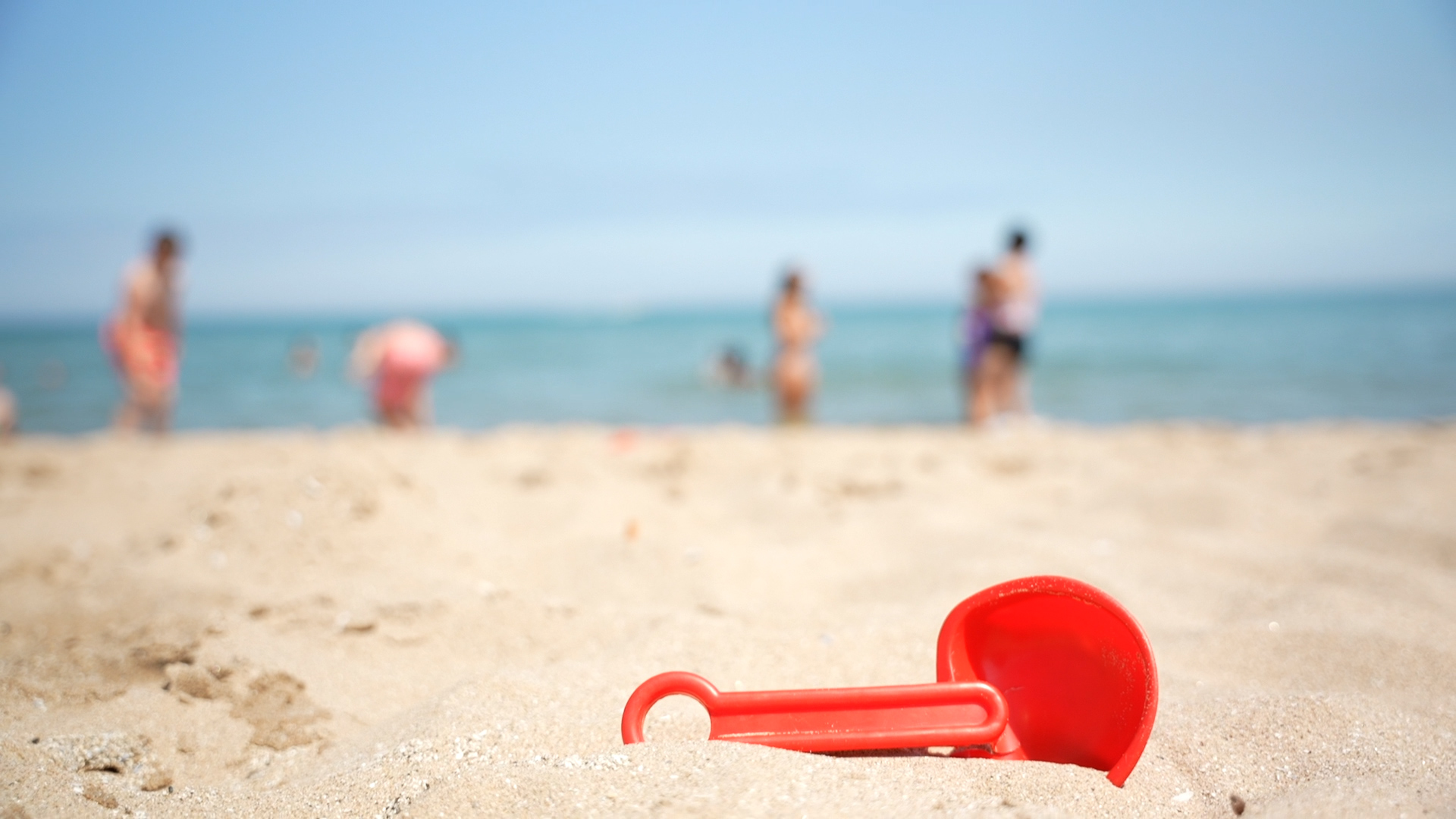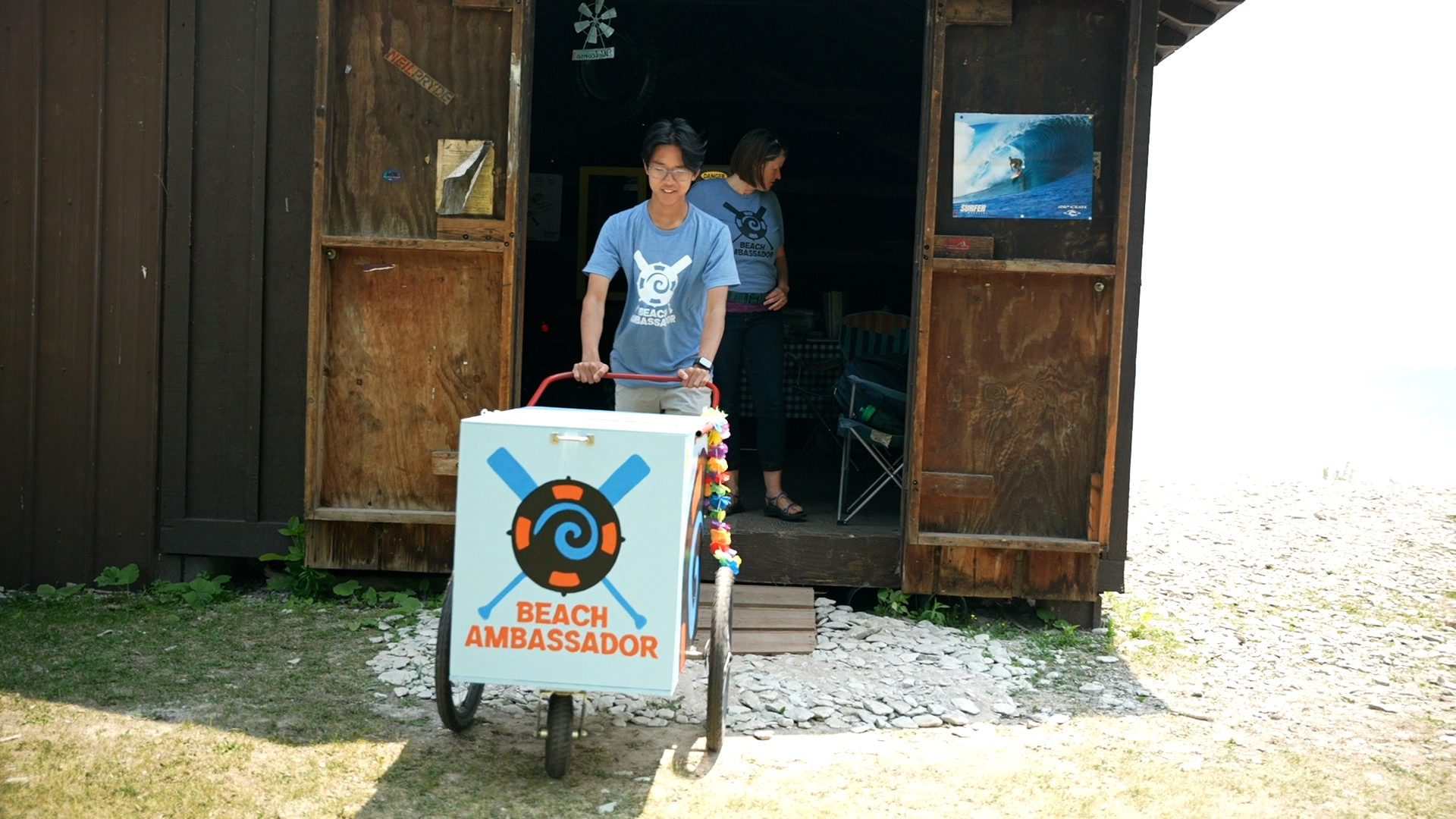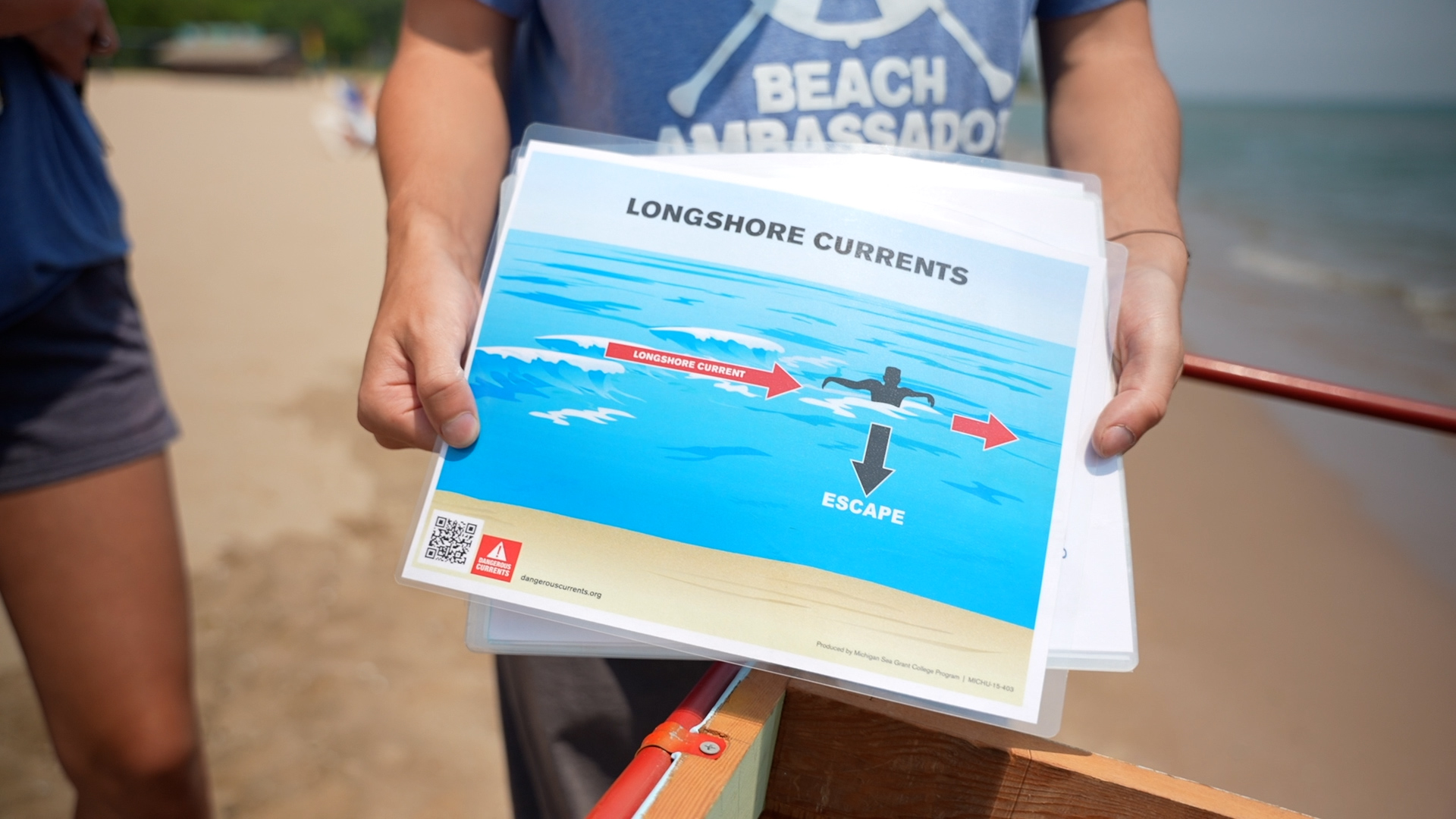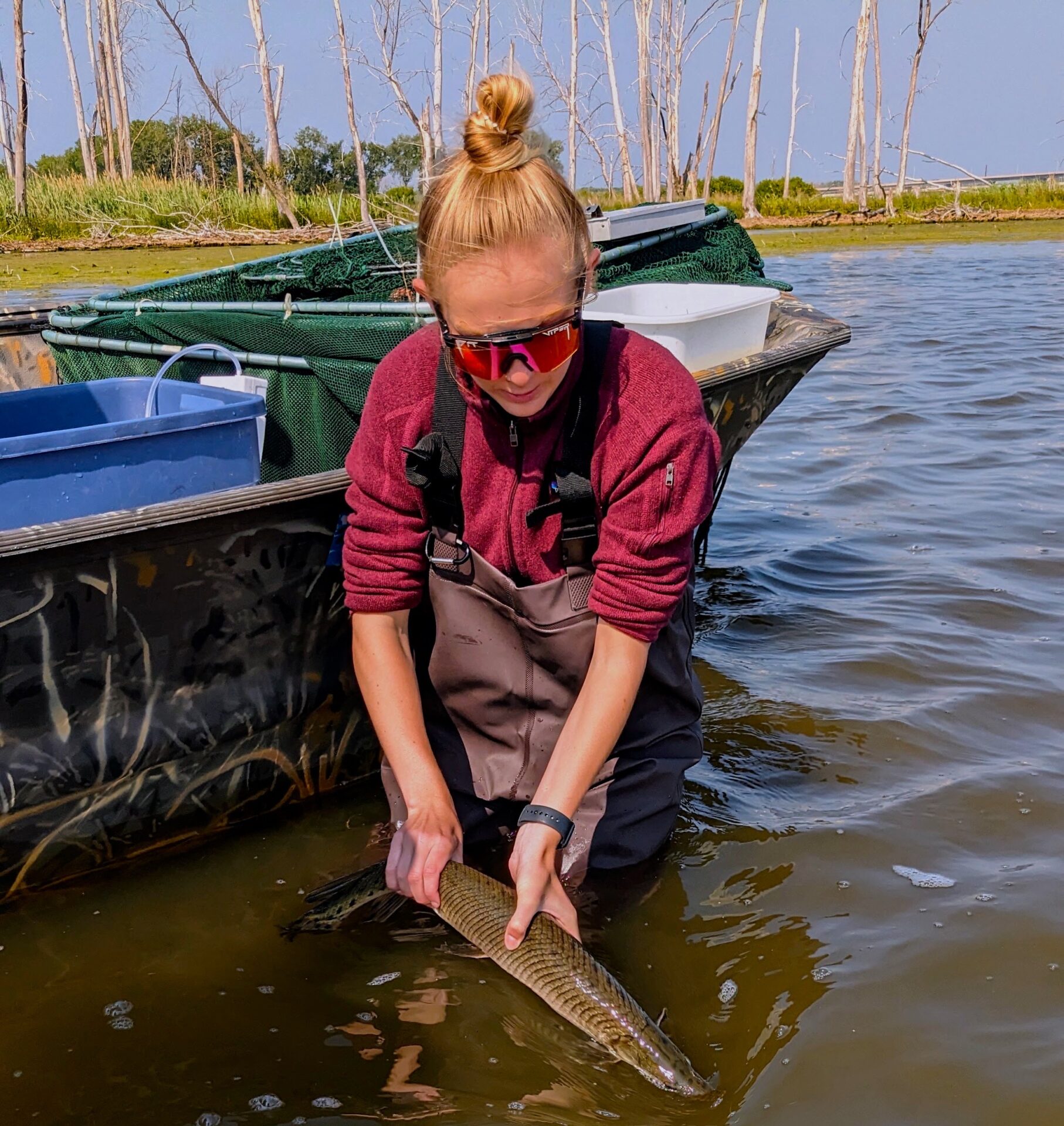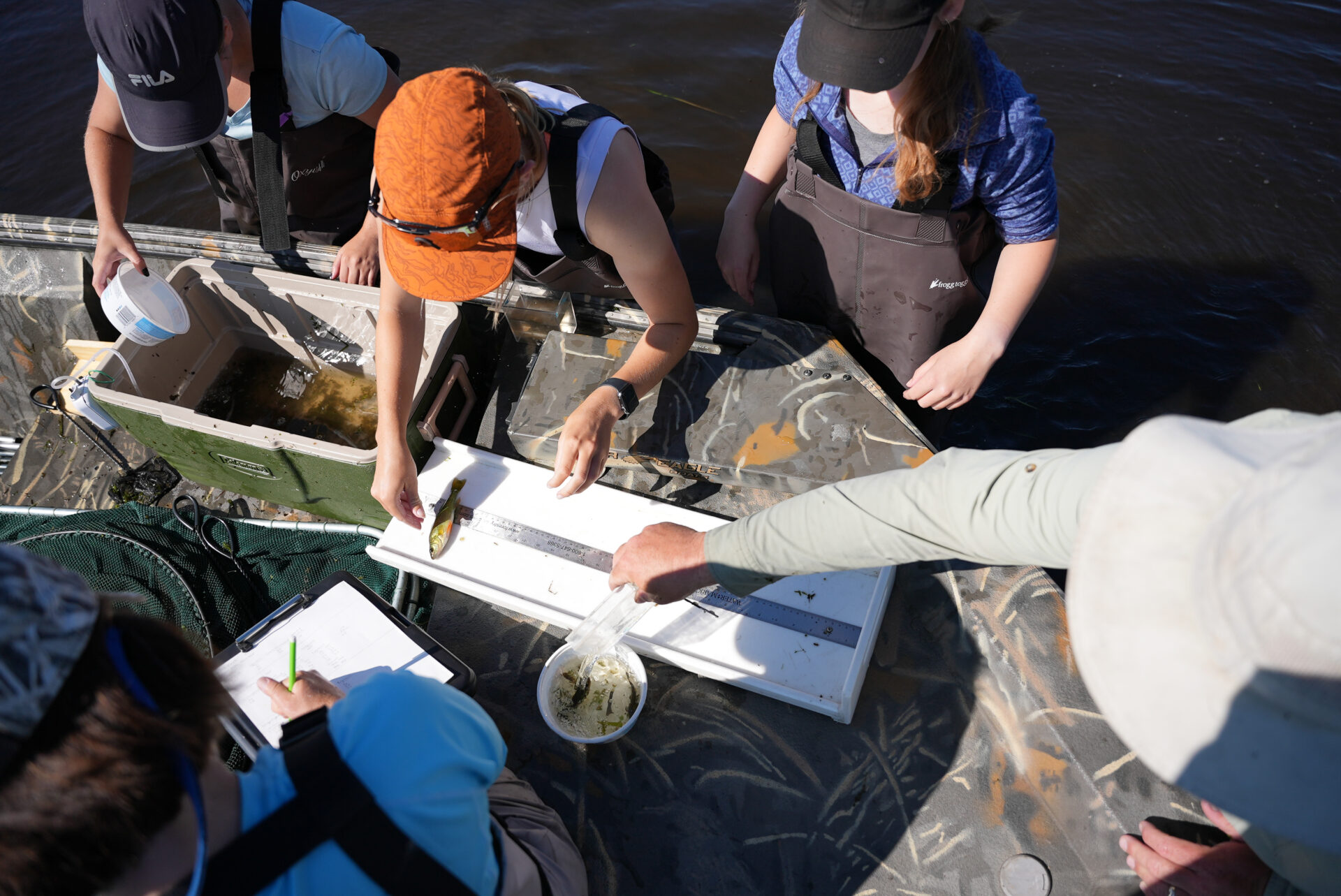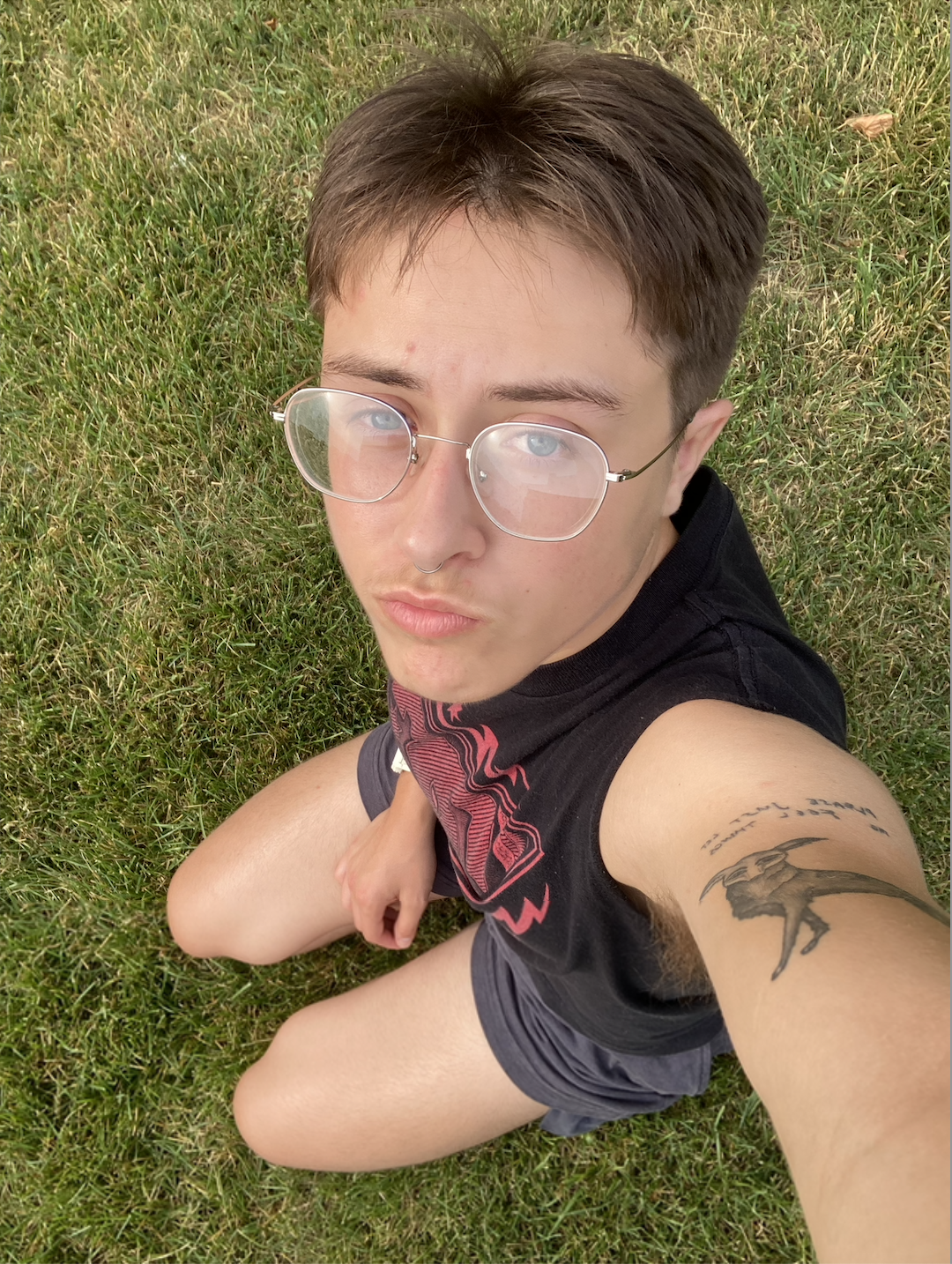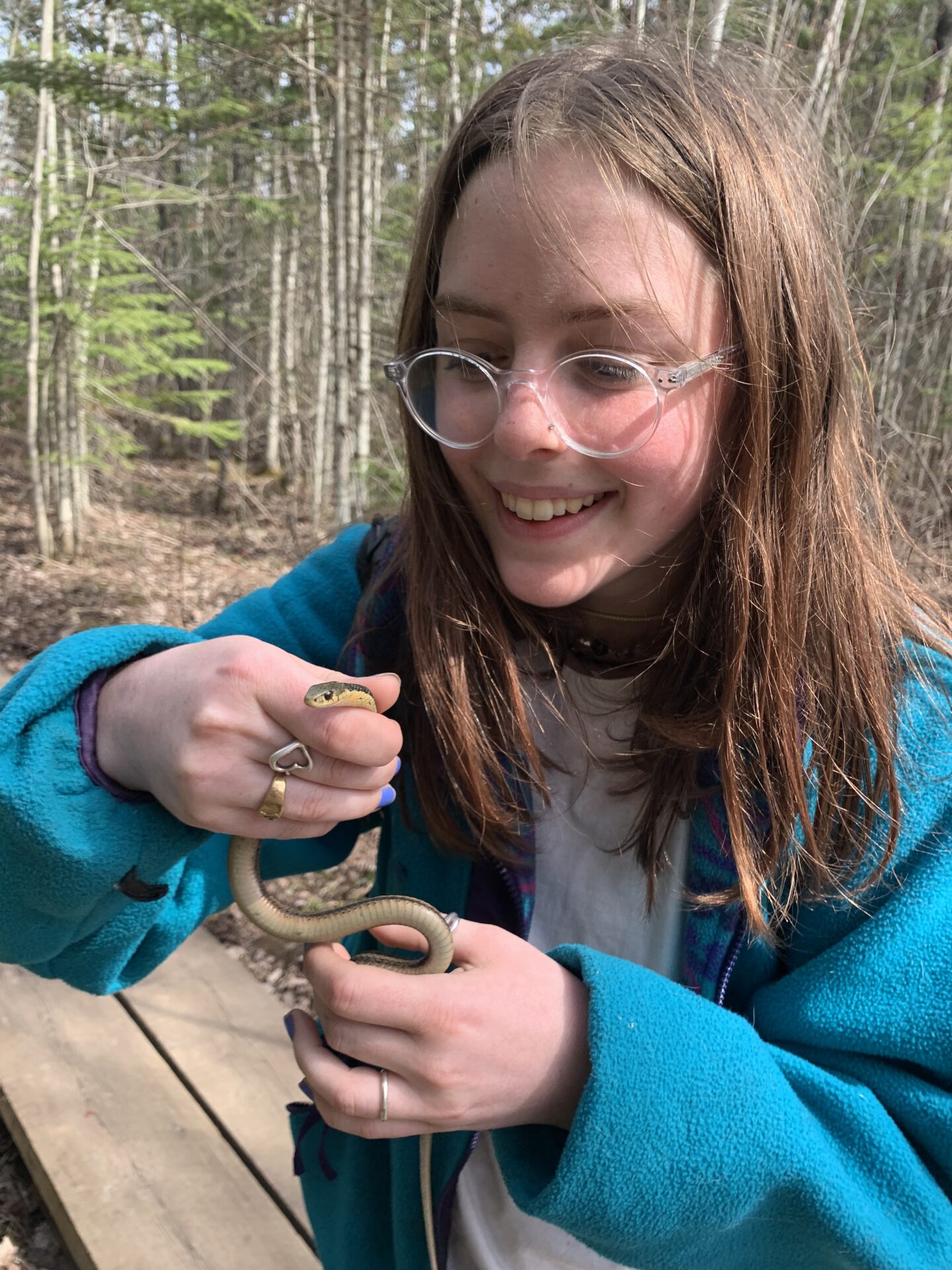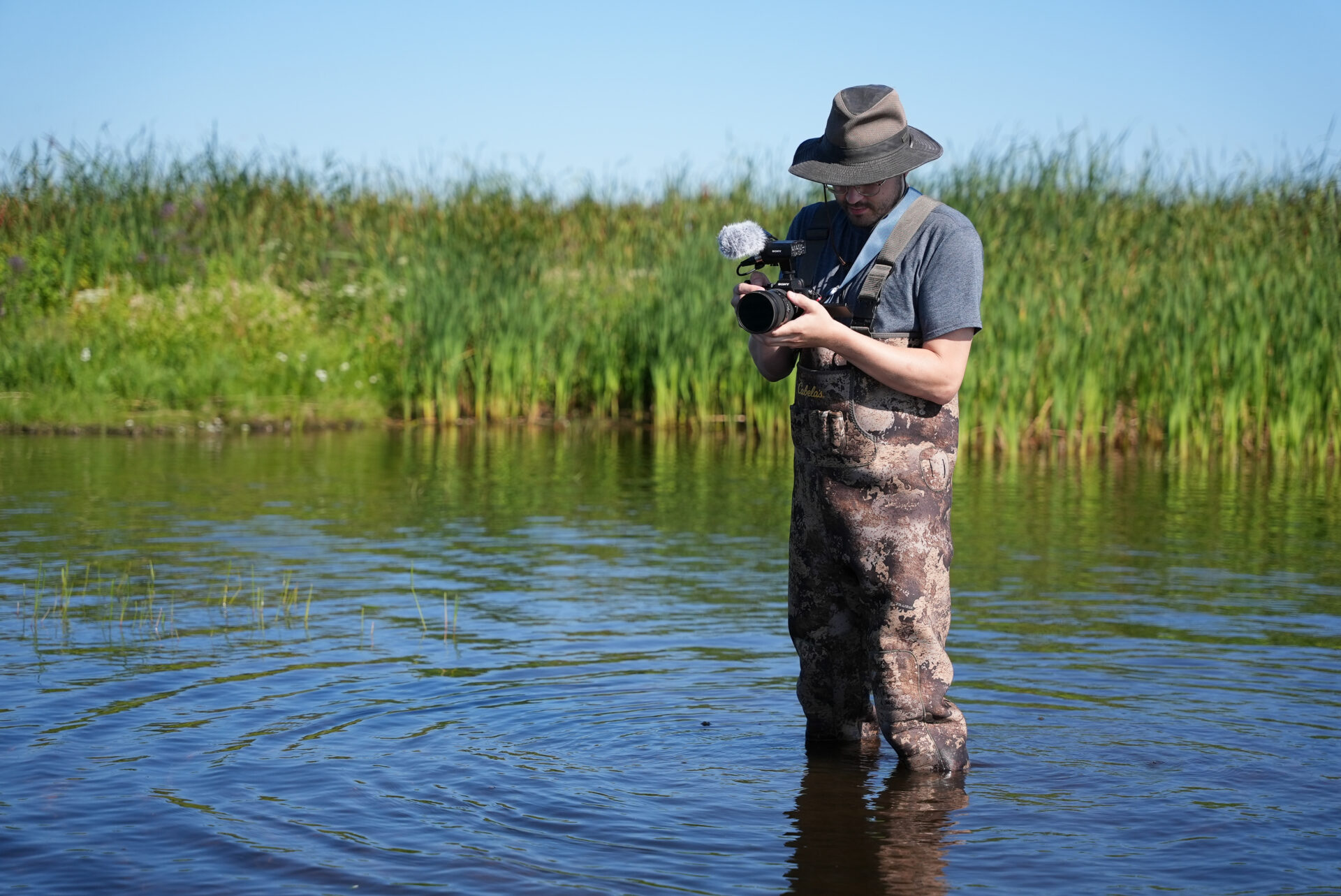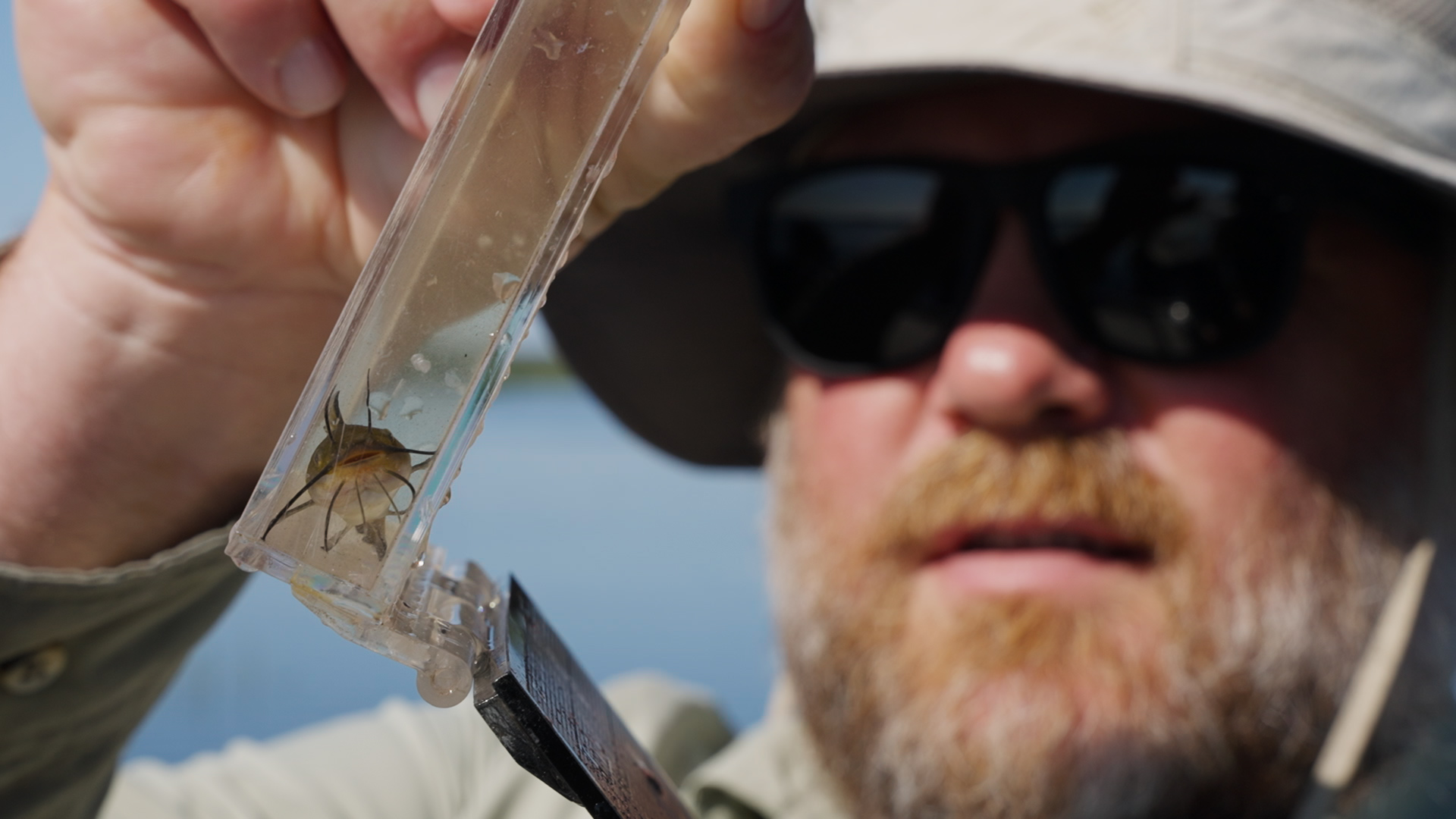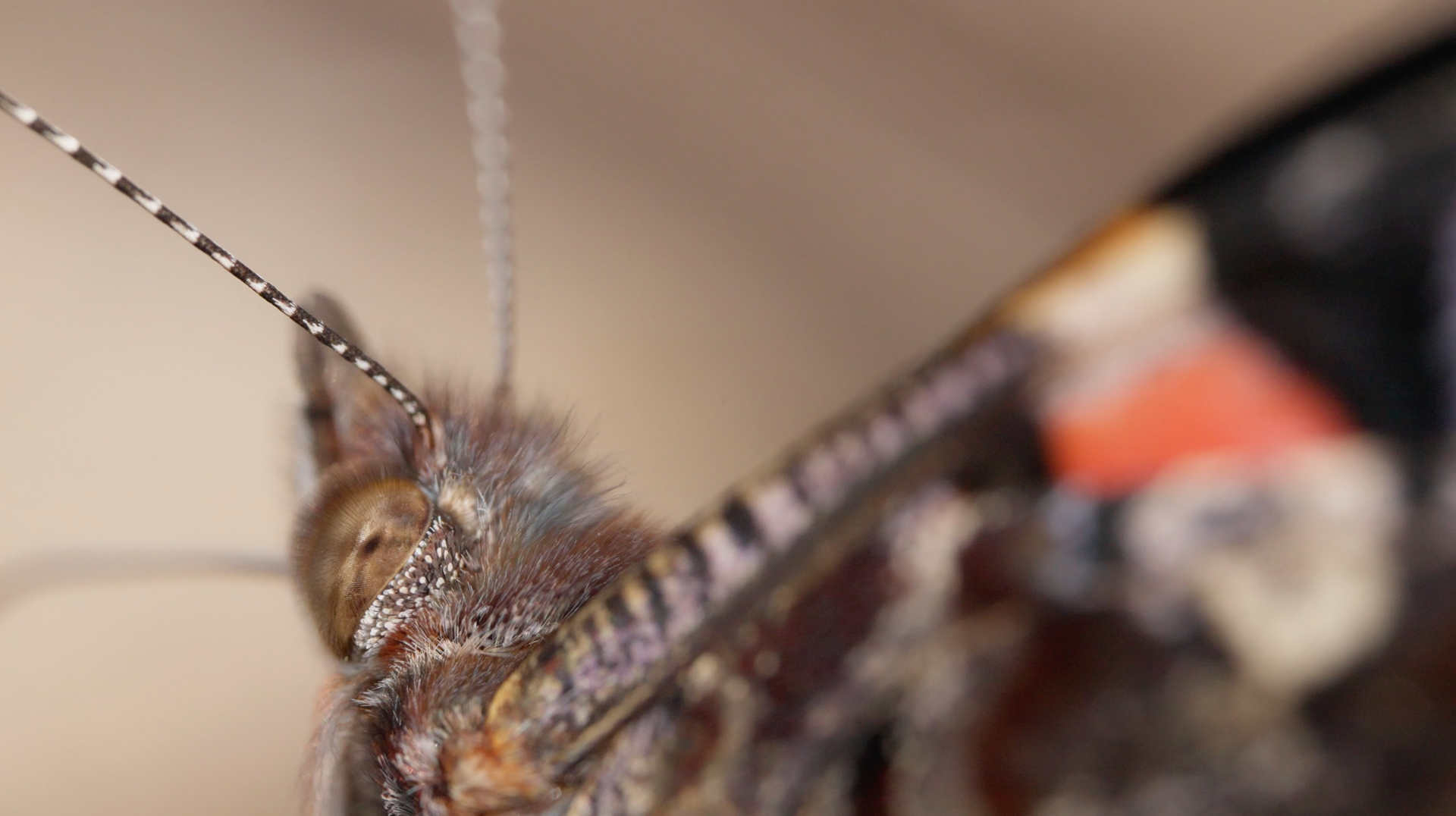Summer scholars dip toes into water-related careers: Part two
In this second part of a two-part series on Wisconsin Sea Grant’s Summer Outreach Opportunities Program Scholars, we introduce six more scholars working on five projects.
***
What did you do this summer?
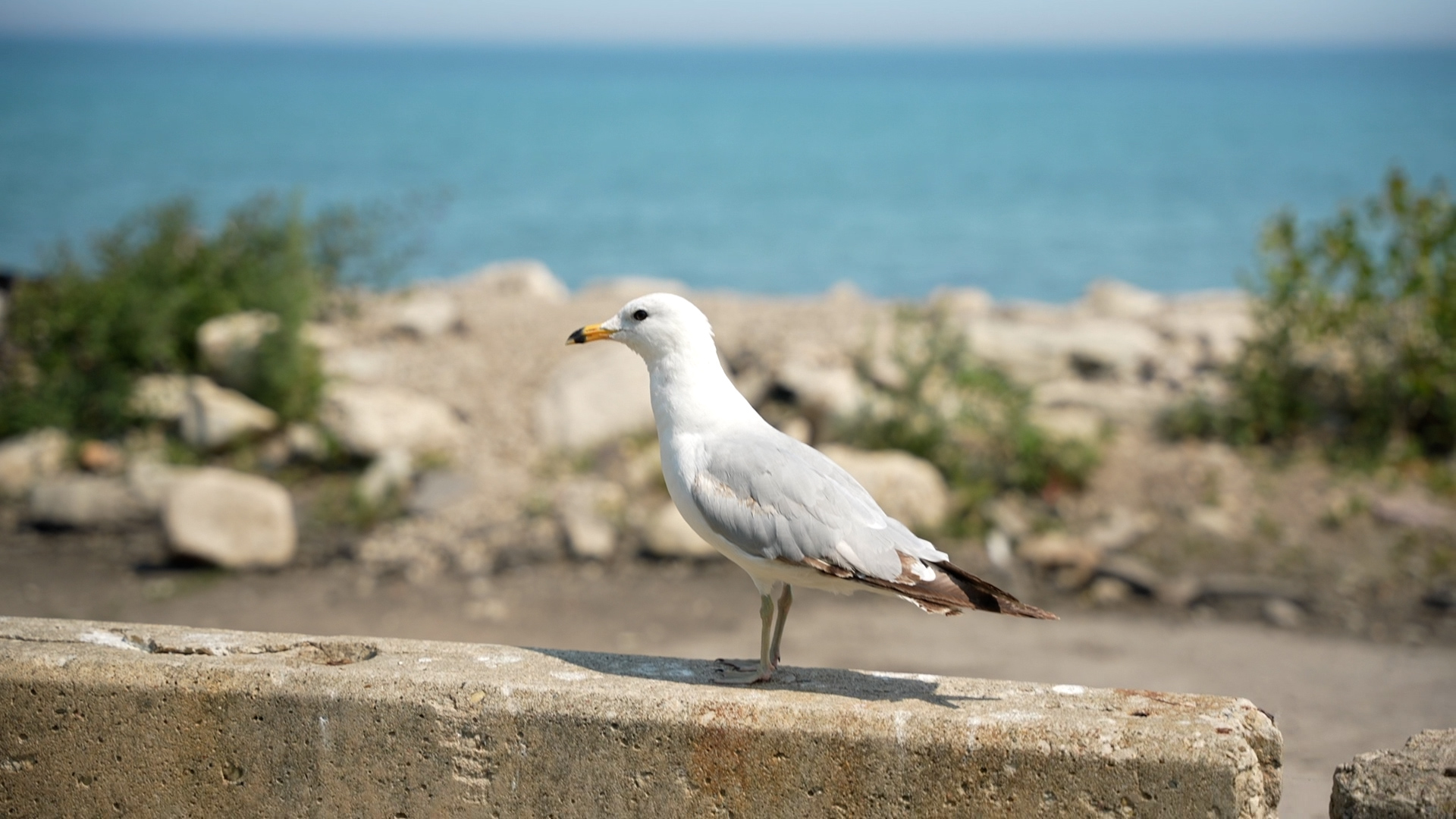
A seagull enjoys summer at Bradford Beach in Milwaukee.
Photo credit: Wisconsin Sea Grant
It’s a question that, in the middle of August, might prompt panicked reexamination of how you spent the long, warm days of a fleeting season.
For Wisconsin Sea Grant’s Summer Outreach Opportunities Program scholars, the answers come easily.
This summer, 12 undergraduate students from across the country spent a jam-packed 10 weeks collaborating with outreach specialists on coastal and water resources projects across Wisconsin. Scholars conducted research, engaged kids and adults and shared the stories of Great Lakes science, all while working alongside mentors to explore careers and graduate education in the aquatic sciences.
Whether they wrangled fish in Green Bay or researched green infrastructure in Ashland, scholars have much to share about how they spent their summers. Here’s a snapshot of the final five projects in our series.
Project: Climate Change and Green Infrastructure
It’s summer in Ashland, Wisconsin, and summer scholar Alexander Wuethrich is already thinking about winter.
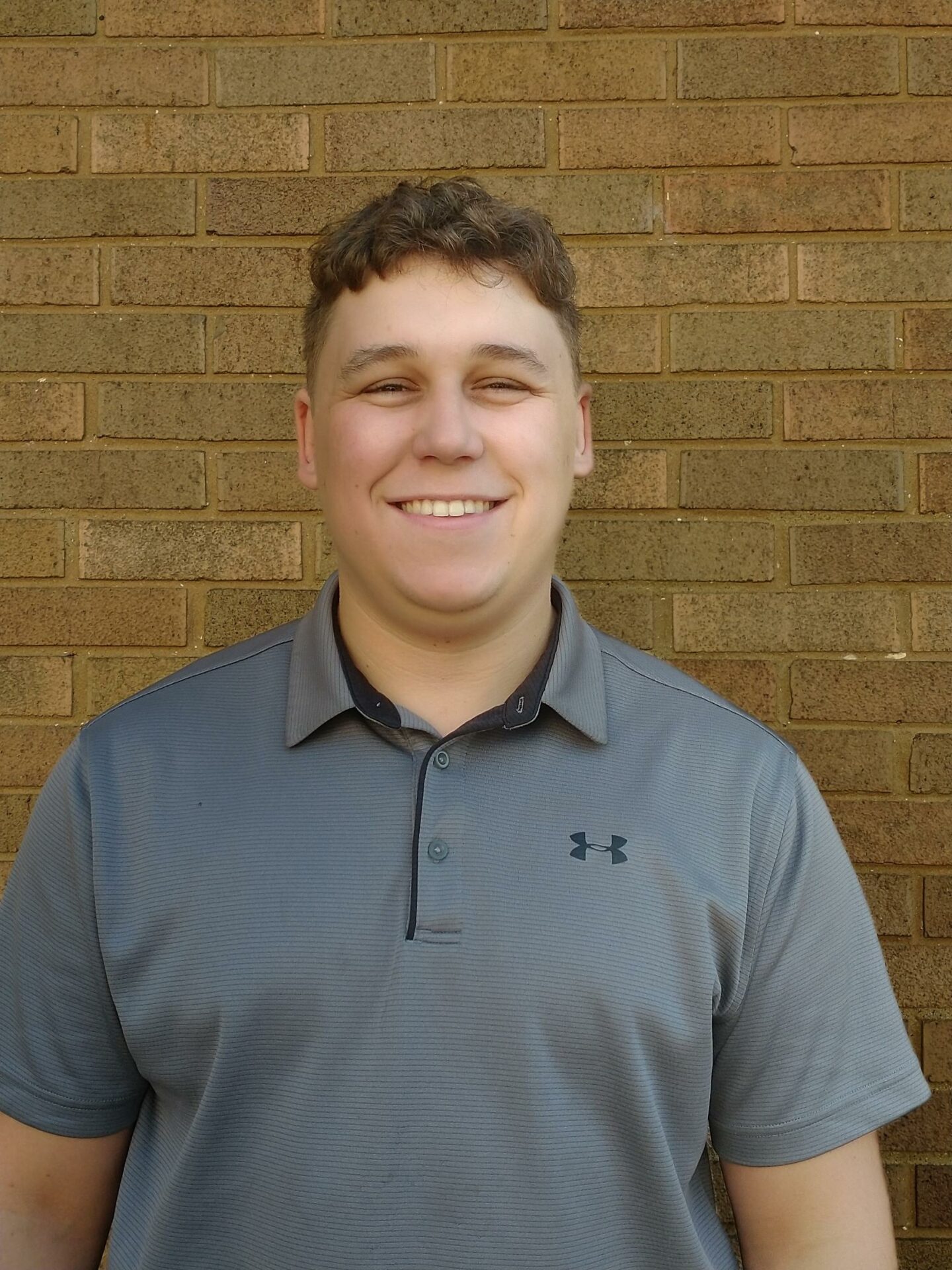
Summer scholar Alex Wuethrich. Photo credit: Alex Wuethrich
Wuethrich, a senior at Northland College majoring in climate science with a minor in physics, is working under the mentorship of Climate and Tourism Outreach Specialist Natalie Chin to research the ways the city of Ashland can use green infrastructure to absorb and slow the flow of stormwater into Lake Superior. He’s focusing on rainwater—but also snow.
Wuethrich explained that the city receives so much snow in winter that crews remove it from city streets and take it to a snow dump site. The current location makes it easy for polluted runoff to enter local waterways.
“Right now, [the site] is at the top of a ravine that leads into a river,” said Wuethrich. As the snow melts, water carries all the sediment, salt and pollutants picked up from city streets into the river, which leads to Lake Superior.
One option is constructing a wetland, which can slow down water and allow sediments to settle out. Wetland plants can also remove heavy metals. Said Wuethrich, “It’ll bring out a lot of those contaminants that we want to keep out of the water system.”
The city can also take measures to prevent pollutants from being on the street in the first place. Enter the street sweeper.
“Learning about how much of a difference [street sweeping] can make was a real eye-opener for me,” Wuethrich said. Working along sweeper routes for three days, he discovered they do more than just tidy up roads. “[Street sweepers] can also pick up heavy metals and other things from cars…like lead and copper that’ll naturally wear off.” Street sweepers also collect dust and sediment before rainwater washes them into the lake.
In addition to getting a crash course in public works, Wuethrich has been using GIS to map storm sewers and catchment basins in the city and developed educational materials on green infrastructure and how to maintain stormwater ponds in the city. He also created a list of trees that, if approved by the city council, would shape what trees can be planted along city streets. The list prioritizes salt- and drought-tolerant native species that could adapt to a warmer, climate-changed future.
The summer scholar experience has underlined that getting involved matters. Said Wuethrich, “It makes a big difference what your local administrators are doing.”
Project: Eat Wisconsin Fish
For Jojo Hunt and Crow Idnani, this was the summer of fish. Paired with Food-Fish Outreach Coordinator Sharon Moen and Aquaculture Outreach and Education Specialist Emma Hauser in Superior, Wisconsin, the scholars spent their summers immersed in the commercial fishing and aquaculture industries across the state: visiting producers, learning about the industry and sharing what they’ve learned. Both scholars completed projects that seek to educate and connect consumers with fish caught or farmed in Wisconsin.
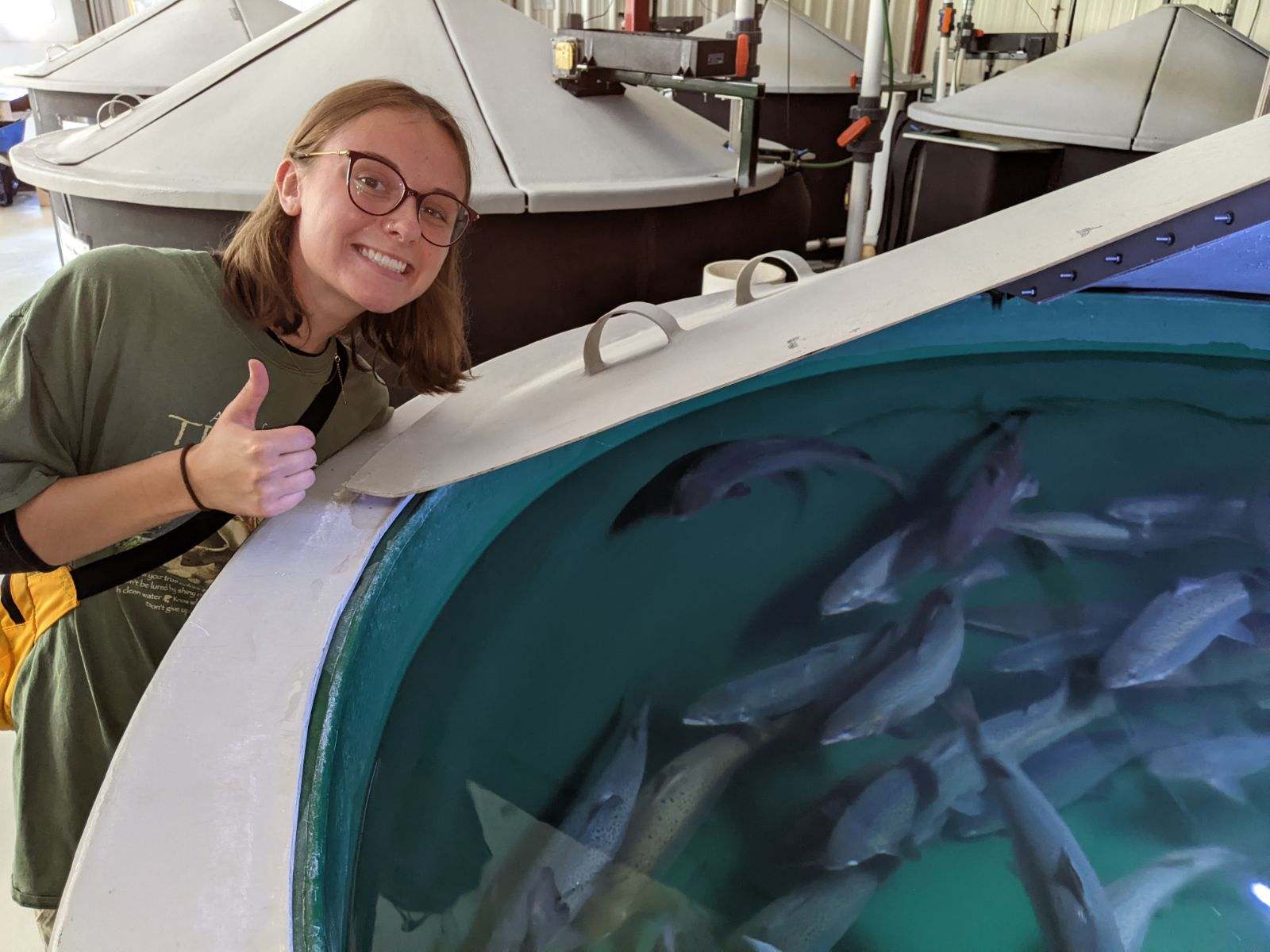
Jojo Hunt at the UW-Stevens Point Northern Aquaculture Demonstration Facility. Photo credit: Jojo Hunt
Hunt, a junior at the University of Denver majoring in GIS with minors in computer science and math, is updating the fish finder map on the Eat Wisconsin Fish website, which helps consumers find local businesses that raise or sell Wisconsin fish.
“The main goal of the map is to bring more attention and awareness to where [the businesses] are and what they do and hopefully break some of those stereotypes,” she said, pointing to the misconception that farm-raised fish is unsustainable.
Hunt is also experimenting with different map-making tools to feature profiles of the producers alongside the data. “I thought it’d be kind of nice to see those right under the map to make the points have a story,” said Hunt.
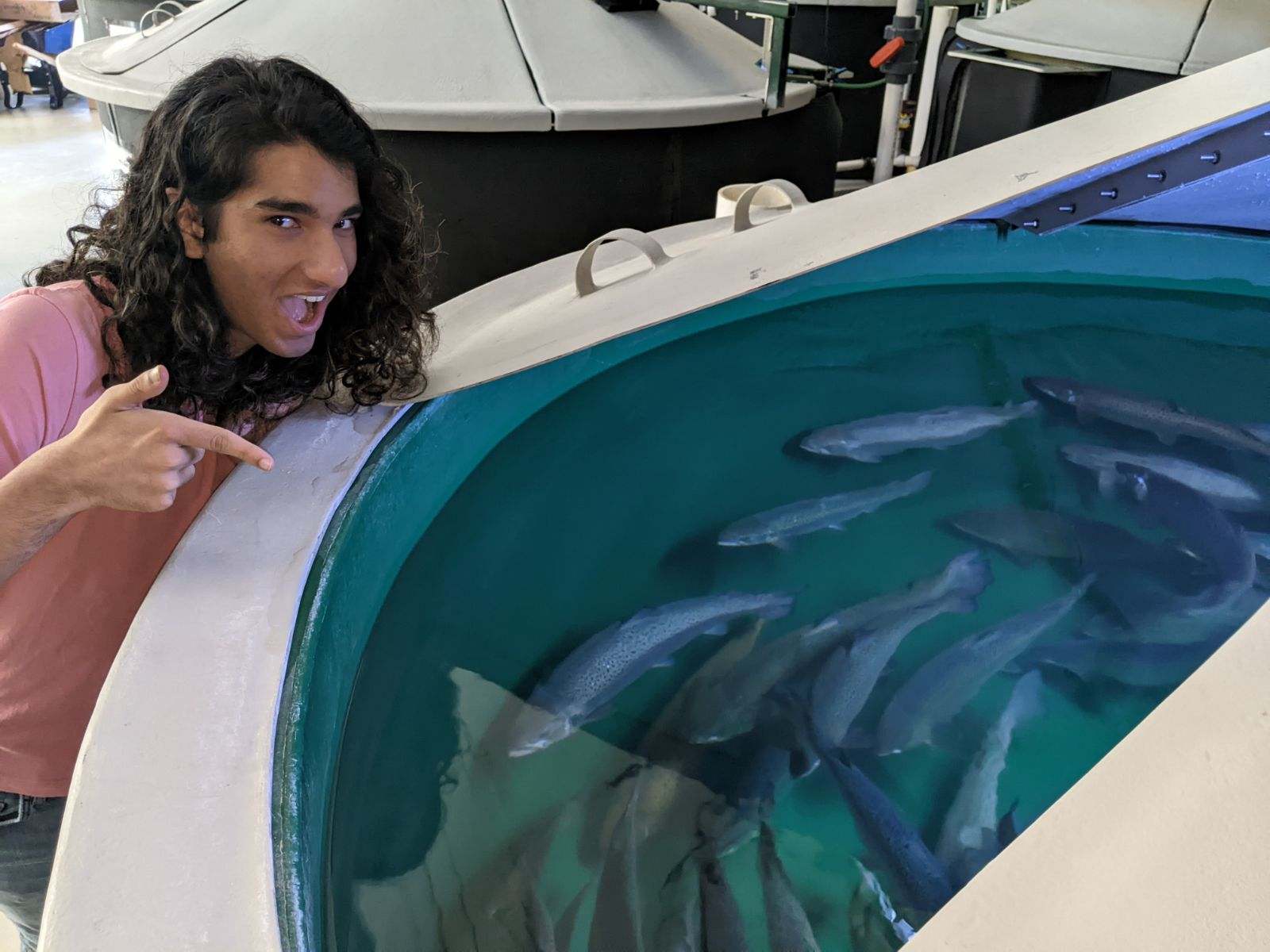
Crow Idnani at the UW-Stevens Point Northern Aquaculture Demonstration Facility. Photo credit: Crow Idnani
Idnani is also working to dispel myths about aquaculture by suggesting updates to A Consumer’s Guide for Wisconsin Farm-Raised Fish, a publication of the UW–Stevens Point Northern Aquaculture Demonstration Facility (NADF) and the Wisconsin Department of Agriculture, Trade and Consumer Protection. The current guide provides an overview of the aquaculture industry in Wisconsin but can get overly technical. Idnani, a sophomore at Cornell University majoring in environmental science with an eye toward science communication, is reviewing the guide through a consumer lens so that it is more useful for the general public.
A creative piece is in the works, too. Idnani is also writing an article tracing the life of an Atlantic salmon at NADF, from when the fish hatches to when it is harvested. Idnani, Hauser and Moen plan to pitch the story to a regional publication to get it in front of audiences outside the aquaculture industry.
From measuring and sorting Atlantic salmon at the NADF facility to preparing shore lunches and teaching kids about aquaculture, the scholars have—unsurprisingly—learned a lot about all things fish.
Said Idnani, “I never grilled a fish until coming here; I never handled a live fish until coming here. It’s been a lot of firsts, but I’ve enjoyed it.”
Projects: PFAS Bioaccumulation in Plants and Animals Associated with Aquatic Ecosystems
Assessing Aquatic Plant Management Tools for Invasive, Native and Nontarget Organisms in Lake Ecosystems
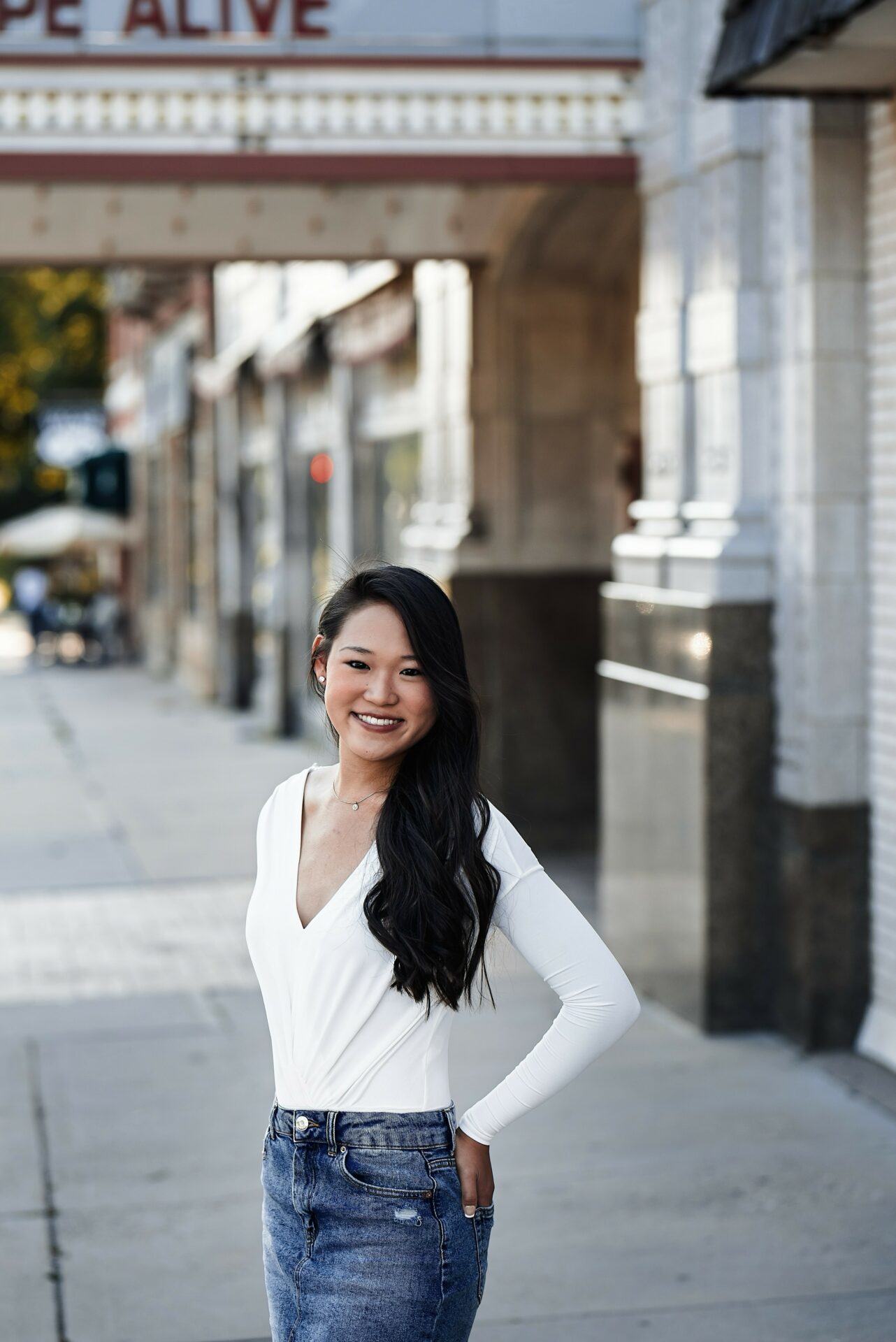
Summer scholar Britta McKinnon. Photo credit: Britta McKinnon
Britta McKinnon and Heidi Wegehaupt spent their summers in lakes and labs working to paint a more complete picture of how contaminants enter and impact aquatic ecosystems. The scholars participated in two research projects: one focused on poly- and perfluoroalkyl substances (PFAS), and the other on herbicides.
McKinnon, a junior at UW–Milwaukee majoring in aquatic sciences, focused primarily on PFAS. Under the direction of Emerging Contaminants Scientist Gavin Dehnert, she identified potential sources of PFAS in northern Wisconsin. McKinnon paid special attention to airports, which use PFAS-containing foams to extinguish fires, as well as landfills and papermills. She noted lakes that may be affected by contaminated runoff.
PFAS can persist in water for a long time. Sometimes called “forever chemicals,” they do not break down easily and can get taken up by plants and animals—and eventually humans—in a process known as bioaccumulation. McKinnon developed a series of factsheets explaining what PFAS are, how they enter and move through the environment and the concerns they pose for human health.
In sharing information with others, she learned a lot about PFAS herself. For example: PFAS are not one substance but many. “I had no idea that there are thousands of different types,” said McKinnon.
Herbicides, not PFAS, were the subject of Heidi Wegehaupt’s research this summer. Working with Dehnert and aquatic invasive outreach specialist Tim Campbell, Wegehaupt collected water and fish samples across three lakes in northern Wisconsin to determine how the herbicide 2,4-Dicholrophenoxyacetic acid affects nonnative Eurasian watermilfoil, the intended target, and nontarget aquatic organisms.
Said Wegehaupt, “Each waterbody has a unique ecological composition, meaning they all react to herbicides differently.”
Knowing how the herbicide affects nontarget species like fish will help lake associations make informed decisions about how to manage invasive species on their lake.
In collecting samples from different lakes, Wegehaupt, a senior at UW–Madison majoring in conservation biology with a certificate in environmental studies, learned she loved fieldwork.
“My favorite part of this experience so far has been spending time at the lakes we’re sampling and just taking the time to enjoy being outside. Getting to know the lakes we work on and talking with locals has been enlightening to my experience as a whole,” said Wegehaupt.
McKinnon, on the other hand, was excited about the lab work. In addition to her PFAS research, McKinnon helped the research team test the impacts of herbicides on fish scale growth. It reminded her of her favorite class, chemistry. Said McKinnon, “I found that I’m in love with the laboratory aspects.”
Neither scholar had previous experience in environmental toxicology but both used the summer to explore which aspects of the research process resonated with them.
Said Wegehaupt, “I still have one year left at UW, so hopefully this opportunity helps me form a path for the future.”
Project: Expanding Voices Heard in the Wisconsin Water Library
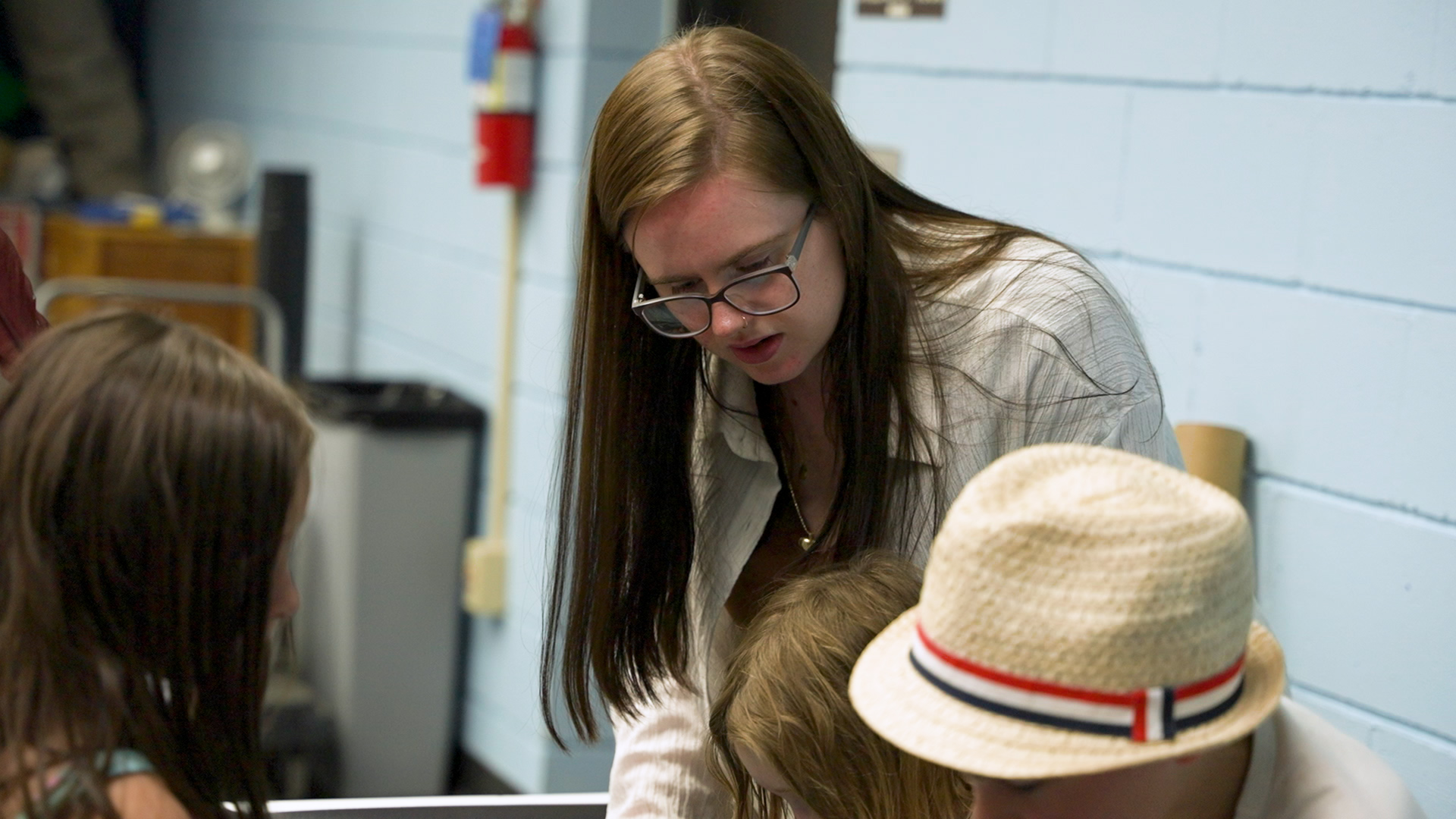
India-Bleu Niehoff helps children with an activity at the library. Photo credit: Wisconsin Sea Grant
As a summer scholar with the Wisconsin Water Library at UW–Madison, India-Bleu Niehoff learned quickly that working at a small library means variety is routine.
“It’s a special academic library, which basically means you do everything,” said Niehoff.
There’s the minding of books, of course—over 35,000 about the Great Lakes and waters of Wisconsin—but then there’s the sharing of books through blog posts, book clubs and library programming across the state. Alongside Senior Special Librarian and Education Coordinator Anne Moser, Niehoff led lessons on shipwrecks and sturgeon and coached kids how to use remotely operated vehicles (ROVs) constructed from clothes hangers.
A rising graduate student in library and information studies, Niehoff was game for it all.
One of her projects was to help coordinate the fall edition of the Maadagindan! Start Reading! book club. A collaboration between Wisconsin Sea Grant, the Wisconsin Water Library and the Great Lakes Indian Fish and Wildlife Commission, Maadagindan! brings together parents and educators to discuss children’s books about Ojibwe culture and language. Meetings also feature an honored guest, usually the author, illustrator or a member of the Ojibwe community who speaks to the themes or importance of the book.
Niehoff researched and helped select the four books, all of which are written by Indigenous women authors. It was difficult to choose just four. As she learned, it’s easy to get lost down the dazzling rabbit hole of books.
“Once you start searching, you keep finding,” she said.
Niehoff also wrote blog posts for the Water Library’s Aqualog blog, the first of which centers on underrepresented groups in nature. The two-part post outlines resources about the history of racism in conservation as well as organizations working to make the outdoors accessible to everyone. The second post, currently under development, will feature resources about Indigenous women in STEM.
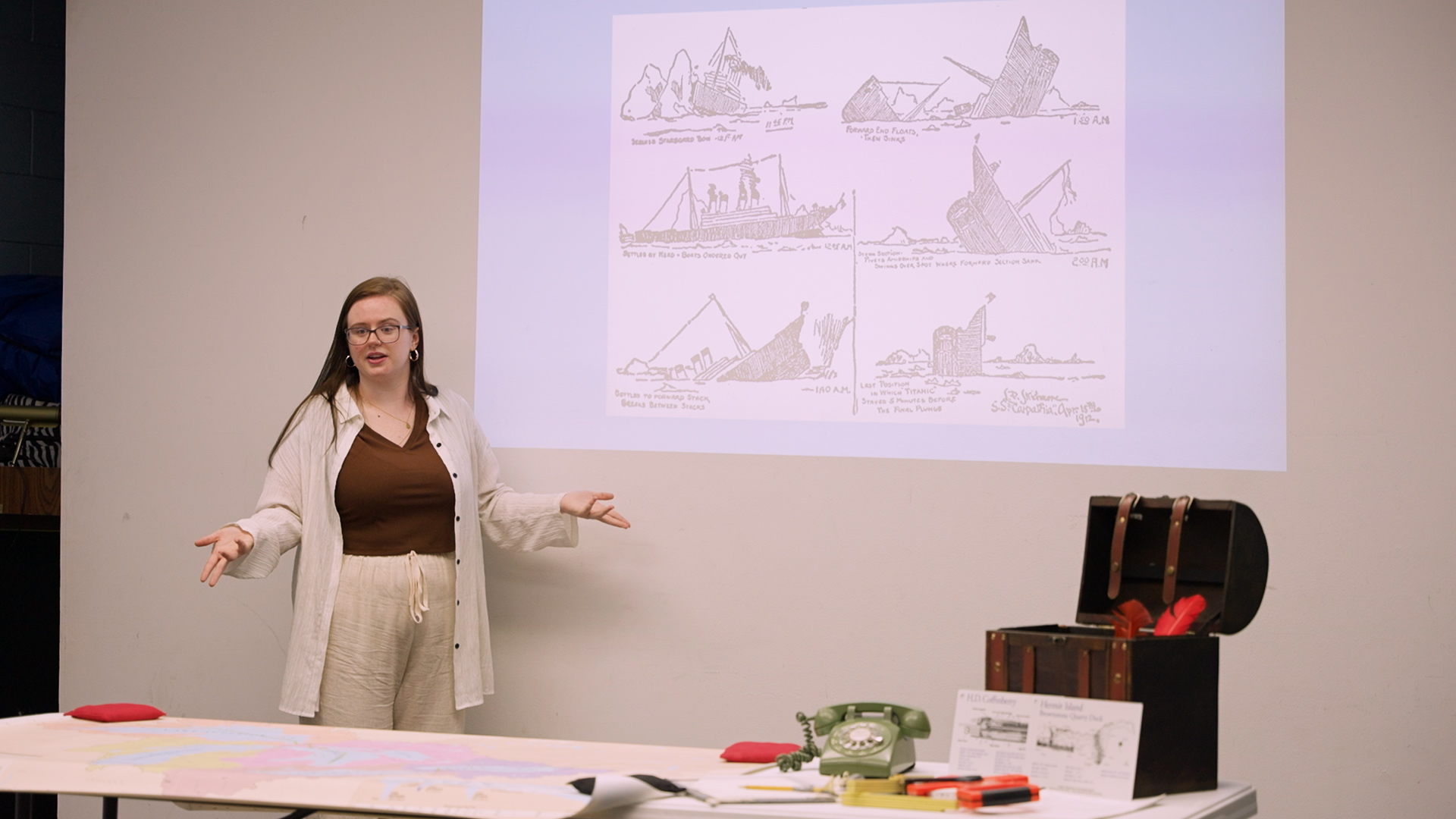
Niehoff leads an activity about Great Lakes shipwrecks. Photo credit: Wisconsin Sea Grant
Said Niehoff, “I’ve really enjoyed looking into stuff I’m passionate about and interested in and then accumulate it and make it something that’s available to other people.”
And let’s not forget about the shipwrecks and sturgeon. Niehoff and Moser travelled across the state, from Madison to Sheboygan to Eau Claire, delivering Great Lakes education programming for kids at local libraries. They read books, led kids in the Japanese art of gyotaku and printed fish on paper and played Great Lakes trivia. Watching Moser, Niehoff learned how to engage kids when reading aloud.
Everybody was learning something.
“Going to local communities and sharing this information [was] really enjoyable. Especially because it’s not just kids, it’s parents and whatever grown-up that’s with them,” said Niehoff.
The summer scholar experience allowed Niehoff to experience many different aspects of working at a library, from cataloguing books to leading kids in crafts. Struck by the breadth of the discipline, she’s got a lot to think about going into her first year of grad school.
Said Niehoff, “There are so many different directions you can go.”
The post Summer scholars dip toes into water-related careers: Part two first appeared on Wisconsin Sea Grant.
News Releases | Wisconsin Sea Grant
News Releases | Wisconsin Sea Grant
https://www.seagrant.wisc.edu/news/summer-scholars-dip-toes-into-water-related-careers-part-two/

